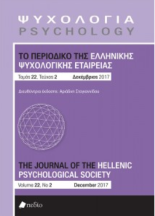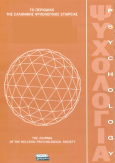Mirror Neurons and Language

Abstract
Mirror neurons were discovered in 1992 by Giacomo Rizzolatti and his team at the Laboratory of Experimental Psychology at the University of Parma, Italy. This discovery has triggered a debate about the origins of human language by describing an evolutionary transition from gestures to vocal language. This paper presents a brief introduction to the discovery of the mirror neurons, while focusing on their contribution to human action understanding and to the emergence of the human language. It also presents a discussion regarding the existence of mirror neurons
and their functions. Under this scope, a brief criticism to mirror neuron theory and their contribution in human communication is also presented.
Article Details
- How to Cite
-
Ταχματζίδης Δ., & Μακρής Ν. (2017). Mirror Neurons and Language. Psychology: The Journal of the Hellenic Psychological Society, 22(2), 15–31. https://doi.org/10.12681/psy_hps.23252
- Issue
- Vol. 22 No. 2 (2017)
- Section
- REVIEWS

This work is licensed under a Creative Commons Attribution-ShareAlike 4.0 International License.
The journal PSYCHOLOGY adopts a Platinum open-access policy. Submission, processing or publication costs are waived by the Hellenic Psychological Society. Papers published in the journal PSYCHOLOGY are licensed under a 'Creative Commons Attribution-ShareAlike 4.0 International' licence. The authors reserve the copyright of their work and grant the journal the right of its first publication. Third-party licensees are allowed to use the published paper immediately after publication as they wish, provided they retain the defined by the license copyright formalities, regarding the reference to its author(s) and its initial publication in the journal PSYCHOLOGY. Moreover, any adjusted work should be shared under the same reuse rights, so with the same CC license.




